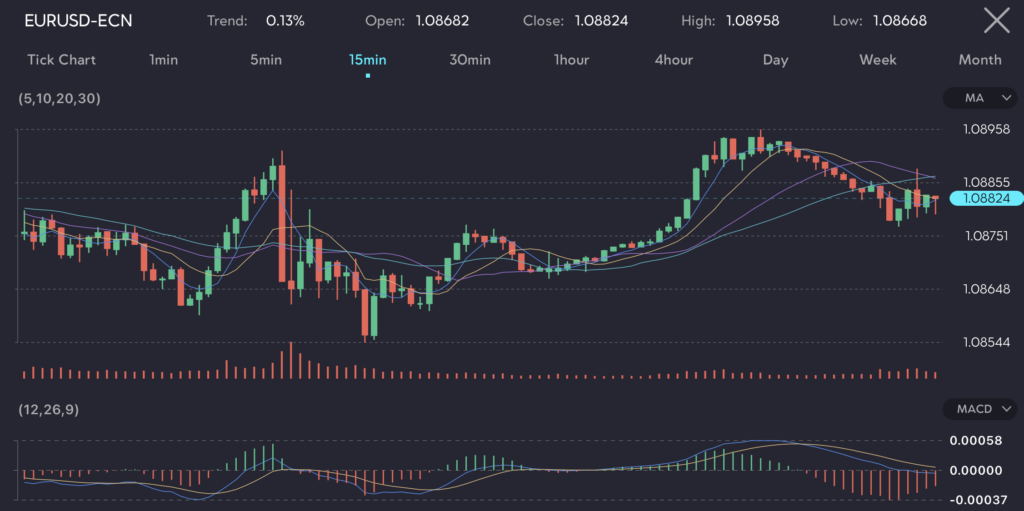Key points:
- ECB expected to announce a 25-basis point interest rate cut on Thursday, the first since 2019.
- EURUSD is likely to face downward pressure with such a dovish stance from the ECB.
The European Central Bank (ECB) is poised to make its first interest rate cut since 2019, with a 25-basis point reduction anticipated on Thursday. This move comes from increased confidence that inflation will return to the level targeted by the ECB.
Such a decision to cut rates signals a shift in its monetary policy stance, reflecting optimism about the inflation outlook of the eurozone, with more rate cuts forecasts beyond June 2024 and well into year 2025.
Implications for the market
The rate cut by the ECB is expected to have several implications for the eurozone economy and financial markets. Firstly, lower interest rates typically aim to stimulate economic activity by reducing borrowing costs for businesses and consumers.
This can lead to increased investment and consumption, supporting economic growth.
Related article: Interest rate tug-of-war for central banks
However, there are potential risks associated with lower interest rates. Prolonged periods of low rates can lead to asset bubbles as investors seek higher returns in riskier assets.
Additionally, lower rates can reduce the profitability of banks, potentially impacting their lending capacity.
Impact on the currencies market
The anticipated rate cut by the ECB is likely to put downward pressure on the euro against the US dollar (Symbol: EURUSD).
A lower interest rate environment in the eurozone reduces the yield advantage of holding euros compared to other currencies, such as the US dollar, making the euro less attractive to investors.

The image above shows hint of weakness in EURUSD, as observed on the VT Markets app.
What traders should look out for in June
The immediate impact of the rate cut by the ECB is likely to be a depreciation of the euro against the US dollar. If the ECB signals further cuts, this could exacerbate the downward trend in EURUSD. Market participants will closely monitor forward guidance from the ECB for further cues.
Sustained lower interest rates in the eurozone could lead to a prolonged period of EURUSD weakness, especially if the Federal Reserve maintains or increases its interest rates.









